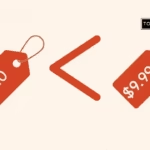Every business wants to grow, but not every growth strategy is built the same. A playbook that works for a fledgling startup may fail spectacularly for a mature company.
To truly scale, you need a growth strategy tailored to your current stage, backed by data, and grounded in reality.
In this article, we’ll walk through how to build a growth strategy that fits your stage, and back it up with real-world benchmarks, statistics, and case studies.
Understand your business stage (with the data lens)
Before crafting a growth plan, it’s crucial to understand which stage you’re in, and what the benchmarks look like for companies at that stage.
Early‑stage startups: high risk, high learning
At this stage, survival is your main goal. You’re focused on building a product, acquiring your first customers, and validating your business model. But it’s not just guesswork: data from young SaaS companies shows some clear patterns.
- According to churn benchmarks, early-stage SaaS startups often experience annual churn rates of 10 – 15%, especially in their first year.
- For very early companies (say, under $1 M ARR), the churn can be even higher. In one article, companies with less than $300K ARR saw a monthly churn of 6.5%, which compounds quickly.
- On growth velocity: in 2024, top-quartile B2B SaaS startups with less than $1 M ARR reportedly experienced growth of 139.1% in a year, per Bundeld’s benchmarks.
These numbers underscore how volatile the early stage can be, but also how much upside there is when you get it right.
Growth‑stage businesses: scaling with metrics
Once you’ve validated your idea, the next challenge is scaling efficiently.
- According to a 2025 benchmarking report from SaaS Capital, the median year-over-year growth rate for private B2B SaaS companies was 25%, down from 30% in 2023.
- Churn behavior changes too: SMB SaaS companies (typical for growth-stage businesses) report monthly churn rates between 3–7%, depending on size and maturity.
- In B2B SaaS, Optifai’s data showed that SMB churn is often 3–5% monthly, while mid-market is more like 1.5–3%, and enterprise companies can go as low as 1–2%.
That means as you scale, retention becomes more important, because losing fewer customers monthly compounds into a serious revenue risk if you’re scaling up.
Established companies: sustaining growth and innovation
Mature companies face a different landscape: it’s no longer just about rapid acquisition. Retention, diversification, and innovation are now critical.
- According to Agile Growth Labs (2025), average churn across a broad sample of SaaS companies is 4.1%, with 3.0% being voluntary churn and about 1.1% involuntary.
- In terms of churn by company size, enterprise SaaS (mature, high-ARR companies) can achieve 1% monthly churn, according to the same data.
- The stakes are high: large companies losing just a few percentage points of churn risk millions in lost recurring revenue, so efficient retention strategies are essential. For instance, fixing billing issues (involuntary churn) can boost revenue meaningfully.
Read Also: Hiring Your First 10 Employees: What Every Founder Learns the Hard Way
Components of a stage‑appropriate, data-driven growth strategy
We’ve got stage benchmarks. Now, how do you use data to shape a growth strategy around them?
Deep customer understanding, not just qualitative, but quantitative
Understanding your customer isn’t a “nice-to-have”; it’s non-negotiable, especially as you scale.
- In early stages, rely on qualitative data: user interviews, feedback sessions, and direct conversations help validate major hypotheses.
- But as you grow, introduce quantitative metrics: cohort analysis, usage patterns, churn cohorts, and engagement metrics.
- For mature companies, predictive analytics and customer health scoring become crucial. You might use AI or models to forecast churn risk, and proactively intervene.

For example, AI-based churn models are becoming more common in SaaS: a lot of companies are using behavior data (feature usage, login frequency, support tickets) to predict which customers might churn and then acting before it’s too late.
Focusing on product‑market fit with real feedback + scaling data
Product-market fit is where the rubber meets the road, but in growth, it’s not a one-time achievement. It’s ongoing.
- Early stage: Build a Minimum Viable Product (MVP), then validate with early adopters. Track usage, drop-off points, feature adoption.
- Growth stage: Use data to decide which features drive retention or expansion. Monitor Net Revenue Retention (NRR) or expansion ARR to see how upsells and new features are working.
- Established: Use advanced segmentation to identify which customer segments drive the most value. Invest in R&D or develop adjacent products for high-LTV segments.
In fact, in a 2024 SaaS report by High Alpha, companies with average contract values (ACVs) between $25K–$50K grew fastest, highlighting that tuning your pricing and value mix matters.
Sales + marketing + retention alignment — backed by metrics
Growth isn’t just about getting more customers; it’s also about keeping them, upgrading them, and reducing churn.
- Early stage: Go for high-impact, low-cost marketing (referrals, content, founder-led outreach). You might not yet have a fully built sales team.
- Growth stage: Build scalable funnels. Use a CRM, automate lead qualification, track conversion rates, and tie marketing campaigns to expansion metrics (upsell, cross-sell).
- Established: Ensure sales, marketing, and customer-success teams share common KPIs like NRR, churn reduction, and customer health scores.
For example, churn is often underestimated. Agile Growth Labs reported that even well-established SaaS companies are seeing average churn rates of 4.1%, and voluntary churn is a major part of that.
To combat this, companies are restructuring compensation and incentives so that salespeople are rewarded not just for closing deals, but also for long-term customer success.
Read Also: 7 Pricing Strategies that Actually Work in African Markets
How to build a growth strategy that fits your stage
Here’s a more detailed, data-informed roadmap for building, implementing, and iterating your growth strategy, tailored to your stage.
Step 1. Set realistic, measurable goals based on benchmarks
Align your goals with industry and stage-specific benchmarks. Without this, “growth” is just aspiration.
- Use SMART goals, but anchor them in data: If median ARR growth for your cohort is 25%, setting a goal of 50% when you’re already at $20M ARR may be unrealistic.
- Define retention goals: For example, if average churn for your stage is 4.1%, aim to reduce that by a measurable amount (e.g., down to 3.5%) through targeted retention efforts.
- Set financial KPIs: CAC, LTV, and payback period should all be informed by benchmarks (e.g., average CAC for B2B SaaS, LTV estimates based on churn).
Step 2. Leverage growth levers supported by data
Identify and prioritize growth levers that align with stage + data.
- Early stage: Referral programs, viral loops, content-driven acquisition. Track conversion from trial to paid, activation rates, and CAC.
- Growth stage: Paid advertising, partnerships, CRM-based lead nurturing, upsells. Use cohort analysis to understand which campaigns drive the lowest churn or highest expansion.
- Mature: New product lines, pricing experiments, cross-sell/upsell, geographic expansion, acquisitions. Use more advanced forecasting models + scenario planning.
Step 3. Build an implementation plan with clear metrics & ownership
Make the strategy actionable.
- Lay out a timeline of initiatives (e.g., Q1: optimize onboarding; Q2: launch referral program; Q3: run pricing experiment).
- Assign ownership (who is responsible for metrics, experiments, data tracking).
- Use tools: dashboards (e.g., in Looker, Tableau, or Google Data Studio), project management tools (like Asana, Notion) to track progress.
- Establish a “data feedback loop”: whichever team runs the initiative must report on outcomes and learnings.
Step 4. Measure, learn, iterate continuously
Growth is never “done.” Use a culture of experimentation and iteration, rooted in your data.
- Regularly review your KPIs: churn trends, cohort retention, CAC payback, expansion rates.
- Conduct A/B tests: onboarding flows, pricing, upsell messaging. Use cohort dashboards to assess impact.
- Predict and intervene: build or adopt churn prediction models. Use early warning systems to flag risky customers. According to WeBuildSaaS, this is especially effective.
- Adjust strategy quarterly: if churn is higher than benchmark, double down on retention; if expansion is lagging, test product-market fit for upsell.
Read Also: How to Build a Brand Customers Love (and Keep Coming Back to)
Examples & case studies, reinforced with data
Adding real-world context with data helps ground your growth strategy.
Early‑stage: real feedback & rapid iteration
Airbnb (in its early days) is a canonical example: they started extremely small, validated demand locally, and iterated based on real customer behavior.
But imagine a similar early-stage SaaS, suppose such a startup sees a monthly churn of 8% in its first year, that’s within the range many early-stage companies experience when testing fit and refining their onboarding, according to broader churn data.
They could run experiments (A/B onboarding flows), track which cohorts churn fastest, and use those insights to tighten the user journey.
Growth‑stage: scaling with retention in mind
Slack (when scaling): viral adoption was strong, but real scaling likely leaned on more structured tactics — integrations, paid campaigns, and upsell to larger companies.
Imagine a SaaS in this phase targeting SMBs, with a monthly churn of 4–6% (benchmarked to SMB B2B churn). By tracking cohorts, this company might notice that customers acquired through organic referrals have 30% less churn than those acquired via paid ads, so they double down on referral incentives and reduce spend on less sticky acquisition channels.
They also set a KPIs like:
- Reduce churn from 5% → 3.5% in 12 months
- Grow MRR by 40%
- Increase expansion ARR (upsell) to contribute 30% of new revenue
All backed by data and regular reviews.

Established: predictive retention and diversification
A mature SaaS company at $50M+ ARR might have a monthly churn around 1%, per industry benchmarks. It also faces a high risk if that climbs even slightly.
Such a company could build a predictive churn scoring model (using customer engagement data, support interactions, billing data) and intervene early, offering tailored renewal incentives, helping customers with onboarding, or identifying expansion opportunities.
They also might experiment with new product lines.
For example, maybe they have a base SaaS product, but data shows 20% of customers are heavy users who might adopt complementary features, so they build addons and test them on a subset, monitoring expansion ARR.
Read Also: African Entrepreneur’s Toolkit: Free Apps and Resources to Start Smart
Why data-backed growth strategy matters
Here’s why integrating real metrics and benchmarks into your growth strategy isn’t just smart, it’s essential.
- Avoid wasted resources: Without data, you’re just guessing. Data helps you prioritize levers that actually move the needle.
- Set realistic expectations: Benchmarks tell you what similar companies are achieving. If median growth at your ARR is 25%, you know whether your targets are aggressive or conservative.
- Optimize retention: Churn is silent growth-killer. Even 1% monthly churn compounds. Understanding churn trends (and their drivers) helps you build systems to retain.
- Scale sustainably: Growth + retention = long-term value. When you know which levers drive acquisition AND which ones maximize LTV, your scaling is healthier.
- Make data-driven pivots: If you run experiments and measure, you can decide to pivot, double down, or optimize confidently, not based on gut feeling.
Conclusion
Building a growth strategy that fits your stage is about more than following trends, it’s about aligning your goals, resources, and actions with your current reality.
Key takeaways:
- Identify your business stage and tailor strategies accordingly
- Prioritize product-market fit and customer understanding
- Set measurable goals and track performance
- Iterate constantly based on data and feedback
Growth isn’t linear; it’s a journey of learning, testing, and evolving. Start small, refine constantly, and scale smartly.
Leave a comment and follow us on social media for more tips:
- Facebook: Today Africa
- Instagram: Today Africa
- Twitter: Today Africa
- LinkedIn: Today Africa
- YouTube: Today Africa Studio















